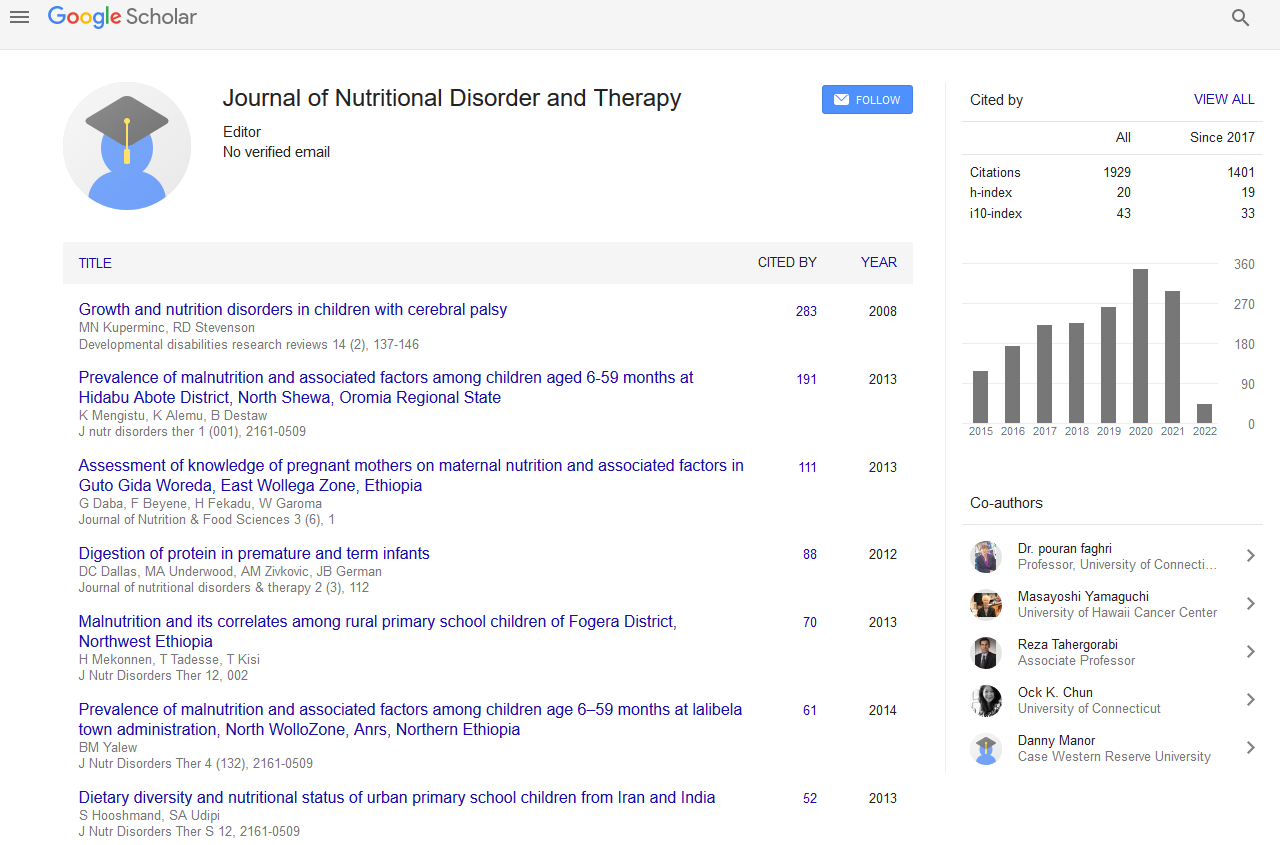Indexed In
- Open J Gate
- Genamics JournalSeek
- Academic Keys
- JournalTOCs
- Ulrich's Periodicals Directory
- RefSeek
- Hamdard University
- EBSCO A-Z
- OCLC- WorldCat
- Publons
- Geneva Foundation for Medical Education and Research
- Euro Pub
Useful Links
Share This Page
Journal Flyer

Open Access Journals
- Agri and Aquaculture
- Biochemistry
- Bioinformatics & Systems Biology
- Business & Management
- Chemistry
- Clinical Sciences
- Engineering
- Food & Nutrition
- General Science
- Genetics & Molecular Biology
- Immunology & Microbiology
- Medical Sciences
- Neuroscience & Psychology
- Nursing & Health Care
- Pharmaceutical Sciences
Prevalence of obesity and its association with diet among 13-year old Omani school children
JOINT EVENT: 13th International Congress on Advances in Natural Medicines Nutraceuticals & Neurocognition & 14th International Conference on Clinical Nutrition
July 27-29, 2017 Rome, Italy
Halima Nasser Hareth Al Dhali
Sultan Qaboos University, Oman
Posters & Accepted Abstracts: J Nutr Disorders Ther
Abstract:
Obesity is a global health disorder and the WHO considers obesity as the most serious non-communicable disease worldwide and is closely related to improper diet. All age groups are affected but the problem becomes worse when children are affected. Obesity in children is defined as BMI > 95th percentile as defined in the Expert Committee Recommendations. In the US, childhood obesity is about 11%, overweight is about 25%. Obesity prevalence worldwide is on the rise since 1970 especially in developed countries. A WHO report stated that, approximately 58% of diabetes mellitus, 21% of ischemic heart disease and 8�??42% of cancer globally were attributable to obesity. These diseases can affect children and adolescents. Obesity also increase cardiovascular disease and increases the risks of all-cause mortality. Obese children are also more likely to become overweight in adulthood than are lean children. Approximately one half of overweight adolescents and over one-third of overweight children remain obese in adulthood.


